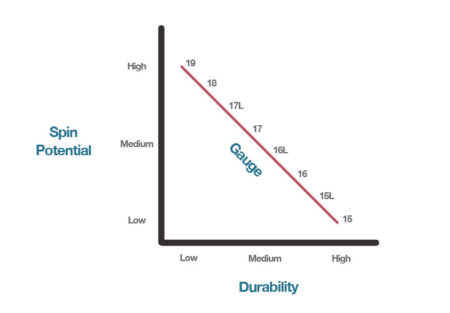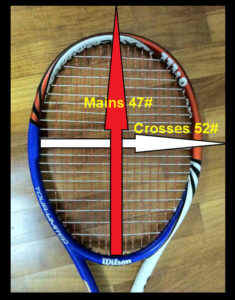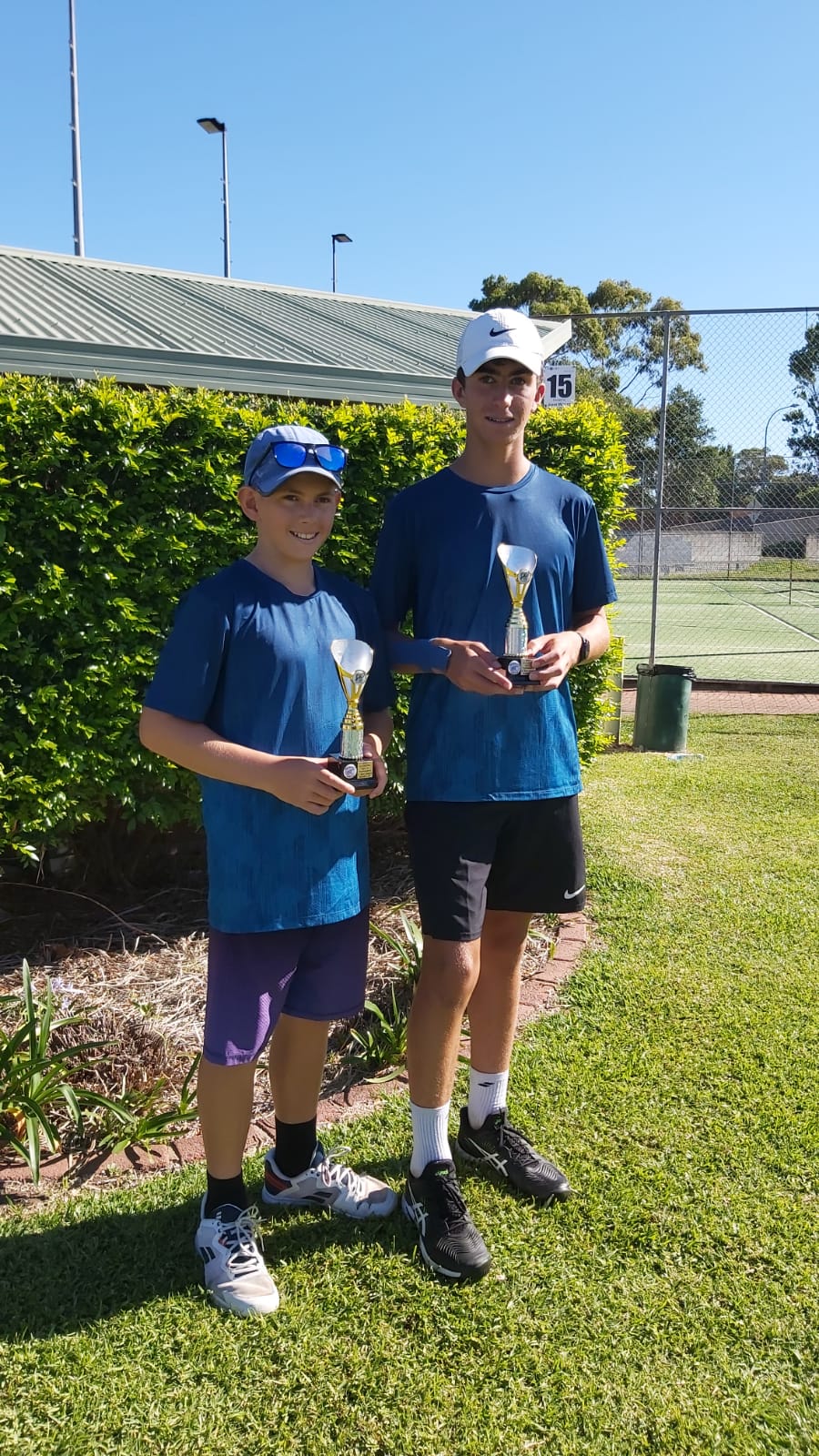Tennis champions Novak Djokovic and Naomi Osaka are among the best paid athletes in the world. But prize money drops off steeply, with lower ranked players often struggling to make a living amid the expense of travel and coaching. The FT talks to governing bodies in what is a fragmented sport, and follows two players fighting to get to the top and get paid…
It’s one of the most popular sports on the planet with both men and women. So why are so many professional tennis players still struggling to make a living?
If you want to do this you have to invest in yourself. It’s a big risk, but it’s also a really big reward. It’s completely dependent on your result. If you have a bad year you could work an entire year at a loss.
Who is in charge of the rules of tennis? Everybody and nobody, right?
People outside the sports world think, everyone’s making a ton. They are not. It is tough.
My name is Alicia Barnett. I’m 28 years old. I live with my dad when I’m not on the road. And this year I’ve been on the road more than I’ve been home.
Hi, I’m Liam Broady. I’m 27 years old. I’m from Stockport, Great Britain. This is the best year of my career.
It’s hard to not get consumed by thinking about prize money a lot, but at the end of the day you have to go to a tournament and realise that you’re investing in yourself and in your tennis.
There’s a lot of pressure to perform well at tournaments. If you don’t do well you can be working at quite a loss. So it’s a pretty unstable income.
At the end of the trip you sum everything up, and you think, OK, I’ve done well this week. And it is a little bit calming. So you come away feeling better that you’ve made a profit or you’ve broken even, and you can relax a little bit, but it’s an afterthought. If I’m playing good enough tennis then the money will take care of itself, I think. My roommate just came in. The reason Luke’s here is to save money basically.
So they’re really seven different stakeholders within tennis. The ITF looks after the junior and up to the professional ranks and beyond that. We have the men’s tour, the ATP, the women’s tour, the WTA. And then you have the four grand slam events. And those seven stakeholders together work on promoting and developing the sport around the world.
Well, we clearly undermonetise. We have a billion fans, you know? We are very popular, and we have a very gender-neutral fan base, but we are extremely fragmented. We have all these different organisations – ATP, WTA, the four slams, and ITF – that go to market completely separately, differently with different governance. So we don’t do a great job in selling and distributing our sport.
That’s where we have to do better in tennis. We’re probably the fourth or fifth largest watched sport in the world, and we get very little in media content except for the majors. That I’d like to see change.
With a billion fans tennis is among the most watched sports in the world, but it accounts for less than 2 per cent of global sports media rights, which were worth a total of $44.6bn in 2020. That means less money to trickle down to the players.
It’s 6:45 in the morning and it feels like a very early start over here in Brest in France. Let’s hope we get a seat on this train. Yeah, you know, life on the road can be difficult at times, but you do get used to it. And it’s a lifestyle at the end of the day. You’re probably away from home really for 40 weeks a year.
You share stories about how you ended up staying in a brothel because it was the cheapest thing. Or you’re eating oats in the room rather than paying for breakfast just to save a little bit of costs.
Most prize money goes to the top players. As you go down the ranks it drops off steeply. This year in the top 500 median earnings from prize money were around $137,000 for men and $92,000 for women. If you’re one of the top players you’ll be earning millions of dollars in prize money as well as sponsorship deals.
Lower ranked players may get some extra help from grassroots funding and free rackets, and clothes in return for social media promotion. But the majority of their earnings will come from winning on court. More than a third of the women and nearly a quarter of the men in the top 500 have taken home less than $50,000 this year.
When I’ve asked players, you know, how much money do you have to earn to make it? And most of them come up with $100,000 to $150,000. That’s a lot of money.
At the moment, the current pie, let me put it that way, the total revenue generated by the tennis professional sport and what we distribute in prize money doesn’t allow for the second tier to have players that can make a living and sustain the cost.
You can’t argue that: the best players deserve the most money. At the end of the day, tennis is a business, and you want to keep your most valuable assets happy. And that’s the same in any business.
It’s the top three or four men and top three or four women that drive ticket sales.
I would debate maybe just the best players get the most money but just maybe a little bit less, and they should share the spread of the rest of the money.
It’s difficult because you think, well, they’ve worked really hard and they’re very talented. They deserve to be there. And if we work hard enough, we can get there too.
All the grand slams have moved to give more money to the players who get knocked out in the early stages. And British players, for example, can also benefit from pro scholarships and tournament bonuses. But many top 500 players don’t make it to the slams.
They play most of their season on the second-tier Challenger Tour and contend with injury, losing streaks, and high costs with few guarantees of financial returns.
I think that you’ve seen a real concerted effort by the tennis stakeholders together in distributing the money so that more players are able to make a proper earning. It used to be a little bit more top heavy, whereas now if you lose in the first round of a grand slam tournament, in singles alone you’re going to earn about $50,000.
I made the second round of Wimbledon this year and that’s kind of my way of paying my coach, and my physio, and my S and C coach for the next year and to be able to afford the tennis tour really.
At some point, you have to draw a line. And beyond that line I think we have to be honest and say, in the Challenger Tour you should be able to at least break even and pay your costs. But you have to be conscious that this is sort of like a university. That’s an investment for you. Then go and move into the professional tour where you have a job.
I’m currently stretching up in the gym here in Bratislava after a good session. I’m on tomorrow against Ilya Marchenko. He’s a good player. I played him last week as well in Bergamo.
Obviously, we got the hotel for free at the Challenger’s, which is a nice bonus. The prize money came to about 1,500 euros I think, but then, of course, I need to pay for my coach’s food, and bills, and his weekly fee as well. I’m probably working at a loss last week. That tends to be the way that it works at most of these tournaments.
I don’t think it will ever be possible to have a sustainable tour at that level simply because it lacks the interest of the fan and the engagement of the sponsors, broadcasters, and ticket revenues.
Billie Jean King won 12 grand slam singles titles. She’s even better known for fighting for equal pay for women. In the early ’70s, one of her aims was this.
If you’re good enough to make a living, very few people were going to be included in that first go around because we knew we had to start small if we’re going to make it. Was that our goal? Absolutely not. Our goal is more is the merrier. I personally would like to figure out how we can have at least 700 or 800 people making a living. That would make me happy because that’s with the NBA. That’s Major League Baseball.
Every time I wake up in the morning I think about it. I have my blessing list, but then I think, we got to do better today. We got to make it work.
In 2020, Wimbledon and other events were cancelled, but the pandemic was also an opportunity.
To be honest, I’d probably say only since Covid have I started to be able to make money and actually put a little bit away into savings, and that’s at the age of 26. I’ve been a professional tennis player for six, seven years before that. During Covid we had a lot of tournaments in Britain, and there were no outgoings.
Tennis did come together. We had what we called a player relief fund, where we gave to the top 750 players in the world. We moved Roland Garros to September. We had to change the calendar. We changed the ranking. We got a lot closer to WTA. I’m a very strong believer that the two tools should be combined because together we are stronger.
We shouldn’t be competing with one another. We should be competing with the outside world, and I think that’s part of the strategy.
With the help of an adviser we are sort of in the process of evaluating the different options of how can we create a new governance that can enable us ultimately to provide a better product to the fans. Because at the moment, if you ask yourself the question, who is in charge of the rules of tennis? The answer is everybody and nobody, right?
If the ATP and the WTA were to merge, which would thrill me, it’s got to be 50-50. You’ve got to fight for each other. When you’re together you need to have equal prize money, equal everything.
Meanwhile, men’s number one, Novak Djokovic, co-founded the Professional Tennis Players Association. He said he wants more transparency in tennis and to improve livelihoods. Low earnings from prize money can mean some players never get their chance on court.
I think the damage to the sport is pretty massive if the wealth isn’t spread to the lower players. I think there are a lot of players then that, like I said, are incredibly talented and never get the chance to achieve their greatest tennis.
There could be guys that unfortunately don’t live in a nation where you have a strong federation which is capable of subsidising your cost. And then you might actually lose that talent that could become a great champion in the future.
We are addressing it. Is it perfect? Absolutely not and we know it. It’ll never be perfect. No sport’s ever perfect. No business is ever perfect. I think it’s quite a miracle that we’re doing as well as we are.
I spent my last 10 days of the year at the Davis Cup supporting the squad, practicing with them, and getting them ready. I basically spent the last couple of months backpacking across Europe really. It felt really good coming home.
You may not start out playing tennis for the money, but the money can be a game changer.
I actually figured out as well I spend about £12,000 a year on stringing and rackets. So at the end of the day this sport is incredibly expensive at the higher levels.
You always have to make sacrifices for things that you want to do. I’m just really grateful that I’m able to play tennis and travel. And I’m grateful that I have that support network because, otherwise, I don’t think I’d be able to do it.
To be top 200 in the world or top 250 in the world is a remarkable achievement. Out of, I think, 7bn people, it’s not many people who can say that. Obviously, if you can become good enough then you can earn a living at the sport. But sometimes it’s not that easy.
A lot of kids will come up to me and say, do you think I should try or not? I tell them always try because you do not want to say when you’re older, I should have tried ever. You don’t want to ever say that, I should have, I could have. So I think it’s really important to give it a go because you know what? If you do make it you’re one of the elite. You get lucky in life, and there’s opportunities you can never dream of.
Tennis: the players struggling to break even







